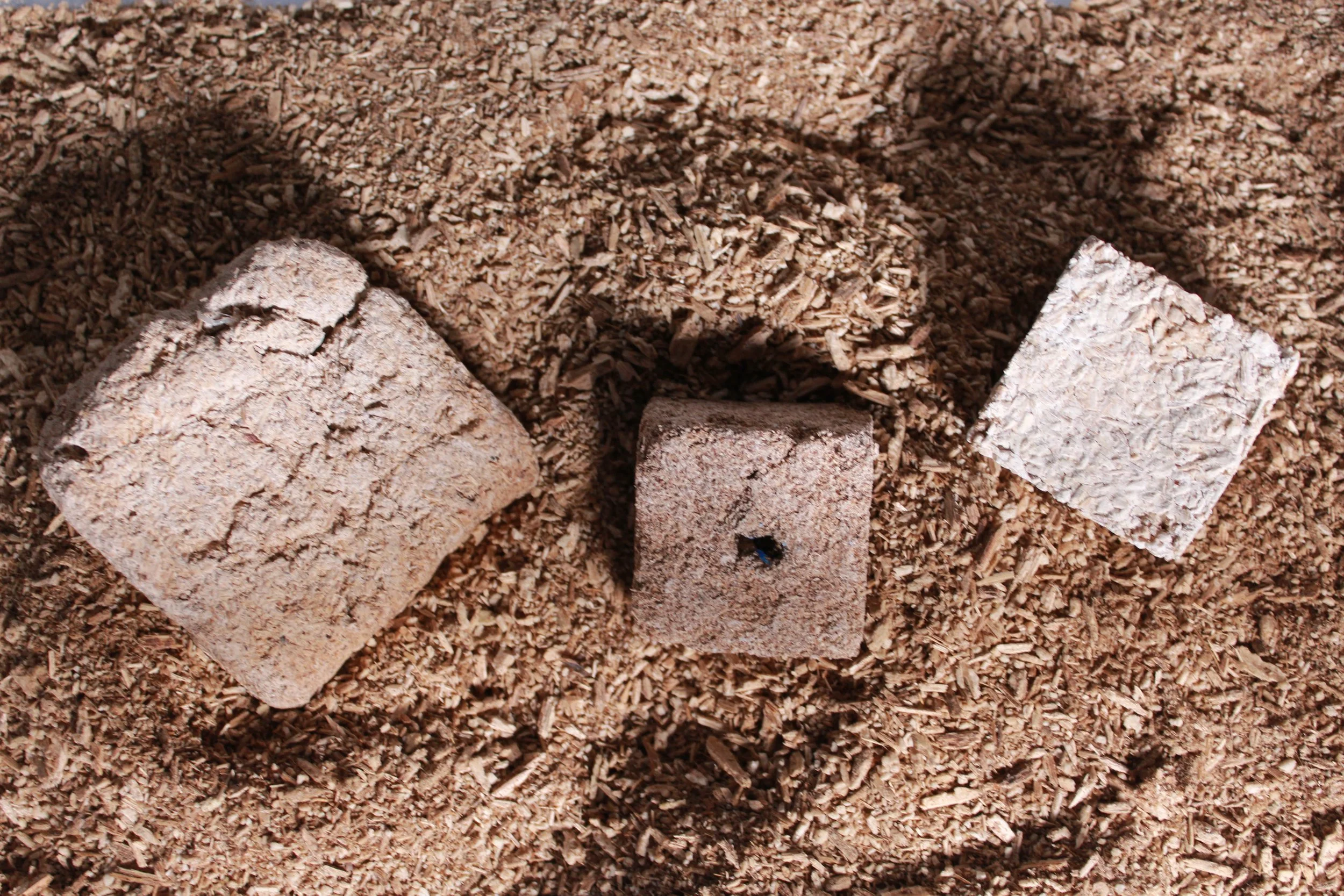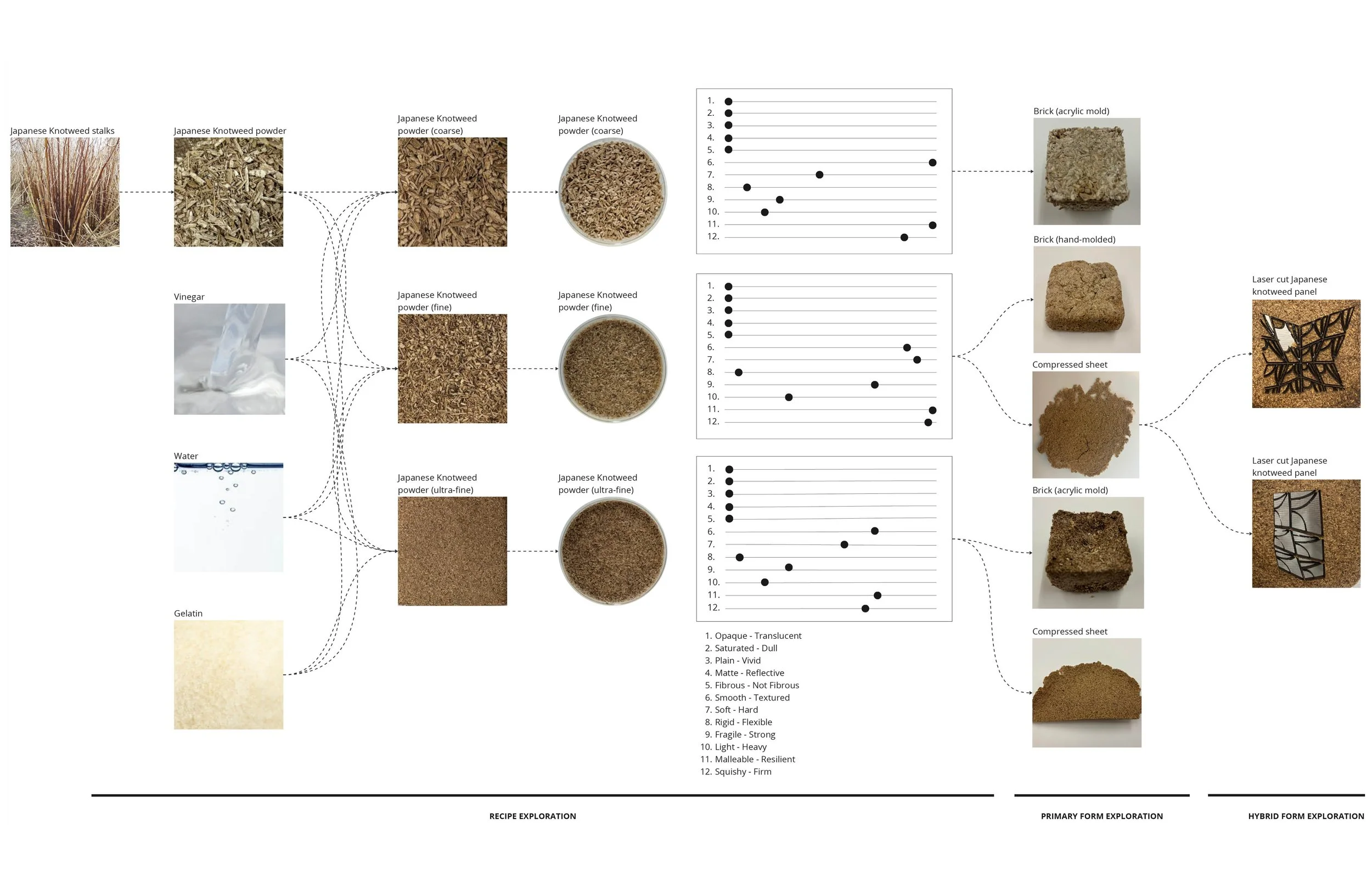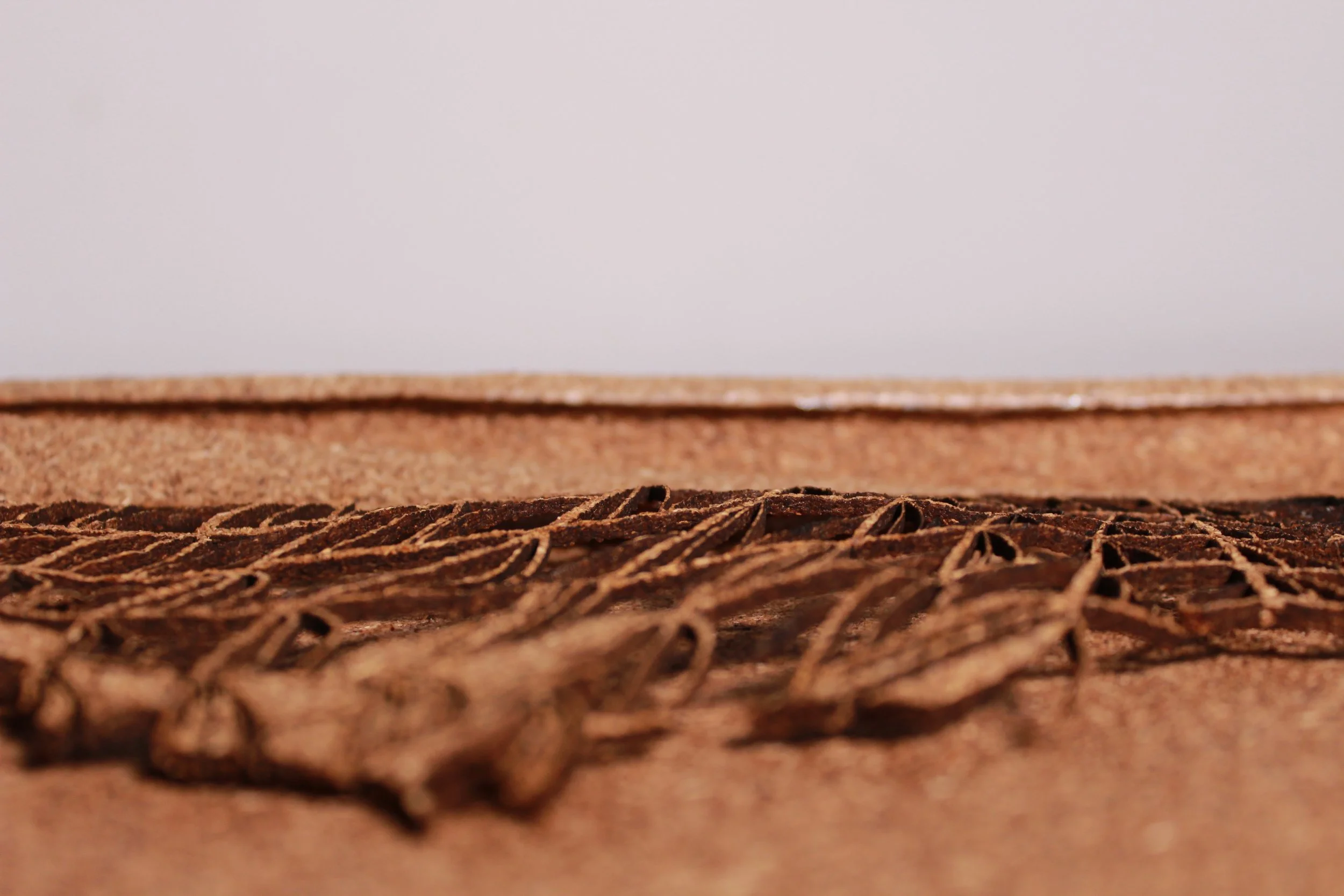
CRAFTING WITH BIOMATERIALS
Series Description:
This series explores the intersection of design, material science, and ecological thinking through the lens of biomaterials. Each project is an experiment in crafting with organic waste and locally foraged materials, investigating how we can co-create with nature rather than extract from it.
Rather than treating biomaterials as static objects, I document their transformations—how they morph, degrade, and interact with their environments over time. These explorations are as much about process as they are about outcome, aligning with a nature-centric approach to design that seeks harmony between human ingenuity and ecological intelligence.
Key research questions include:
How can we develop fabrication techniques that repurpose urban and invasive biomatter into new material systems, fostering sustainable practices in both design and community engagement?
How can the inherent dynamism of biomaterials be choreographed over time, revealing their agency and potential for self-shaping structures?
Each project in this series links back to the others, forming a broader dialogue about material ecology and the future of regenerative design.
JAPANESE KNOTWEED BIOMATERIALS:
TRANSFORMING INVASIVE PLANTS INTO NEW MATERIALS
Japanese knotweed, an aggressive invasive species, is often treated as a waste product. This project explores its potential as a raw material for experimental biomaterials and sustainable design. Collaborating with Jessica Wu, Audrey Reiley, and Tobi Aina, we foraged, processed, and transformed Japanese knotweed into rigid sheet materials and compressed bricks.
This project reframes invasive species as valuable resources rather than ecological threats, offering a sustainable material alternative while simultaneously addressing environmental restoration.
KNOTWEED SHEETS
Combining knotweed fiber with corn starch, vinegar, glycerin, gelatin, and water, we created durable sheets that were unexpectedly stronger than raw knotweed stalks.
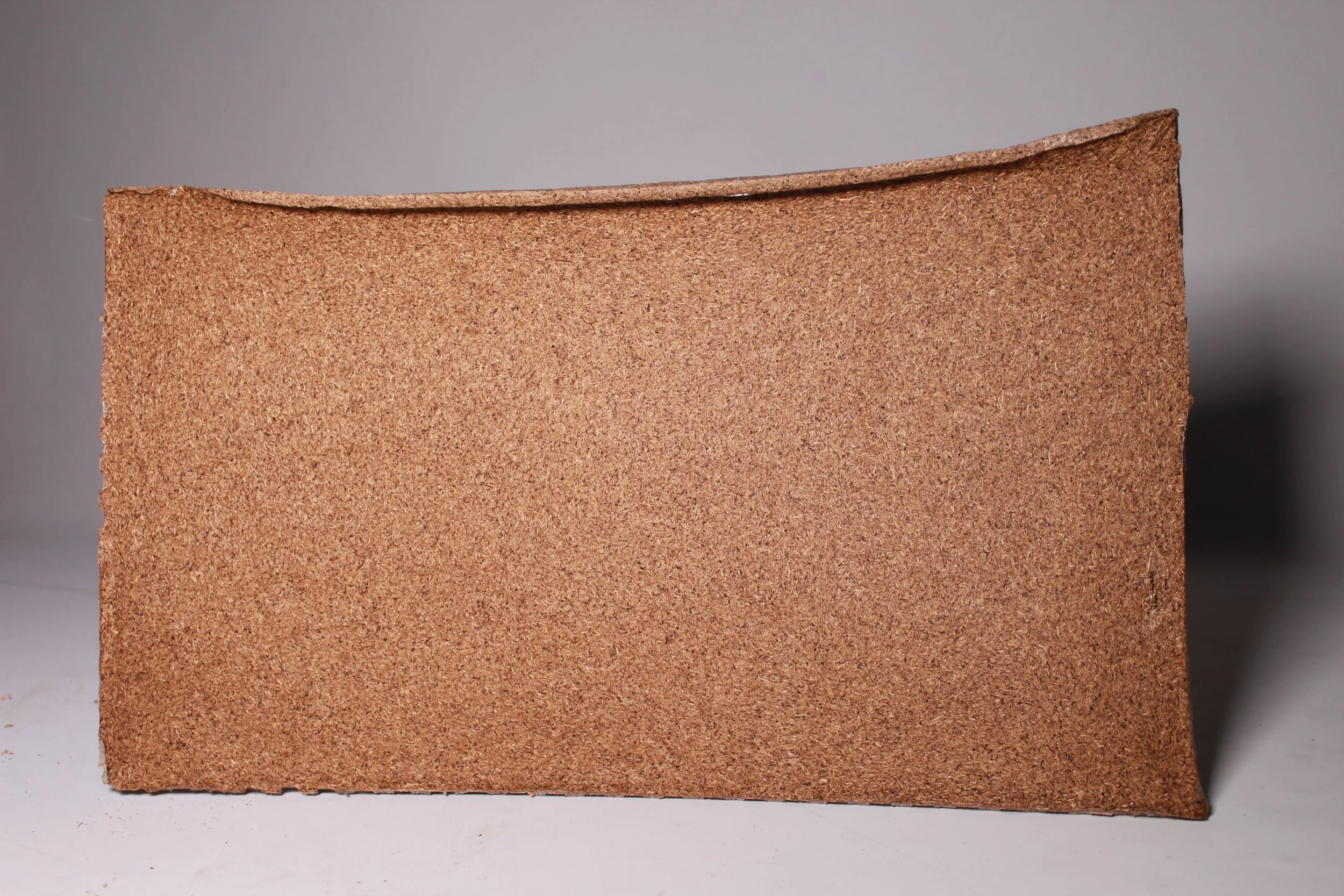
front side of knotweed sheet; this side was exposed to air while it air dried.

back side of knotweed sheet; this side faced the reusable acrylic mold into which the knotweed mixture was cast.
KNOTWEED PANELS
Once we had developed a reliable recipe and technique for making knotweed sheets, we tried laser cutting them into decorative panels. The pattern we used for our first attempt created pieces that were too thin. I’m currently at work on improving this!
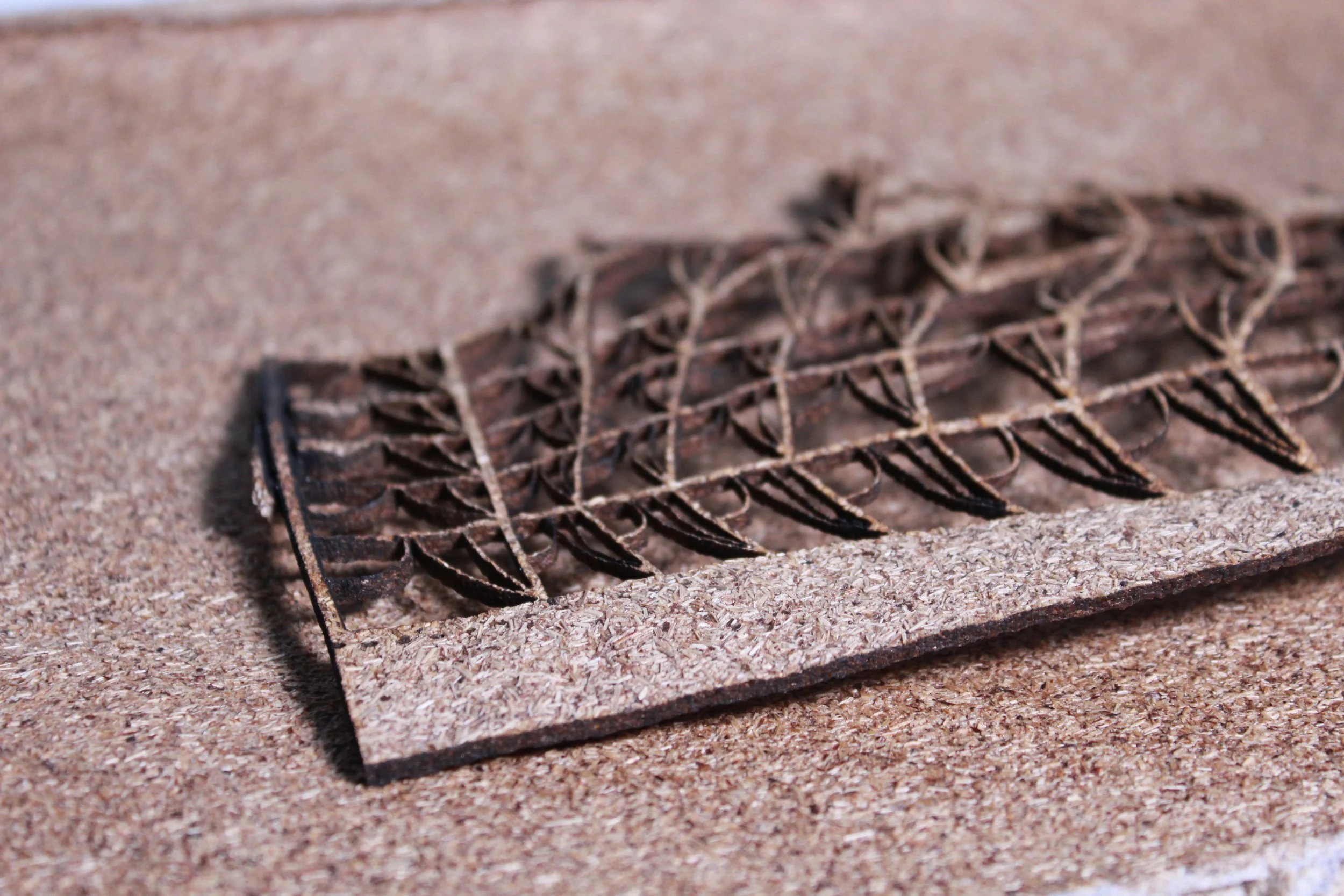
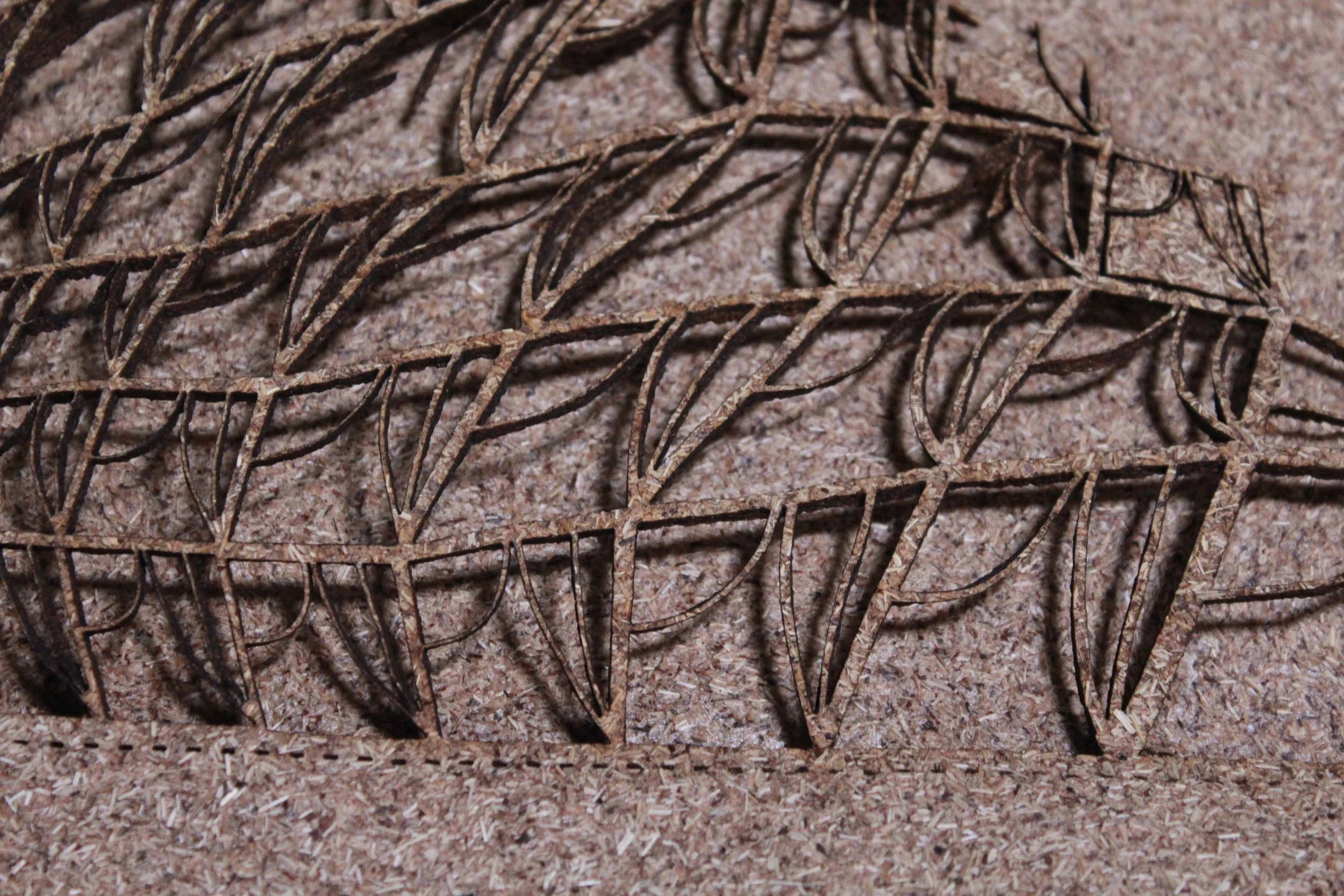
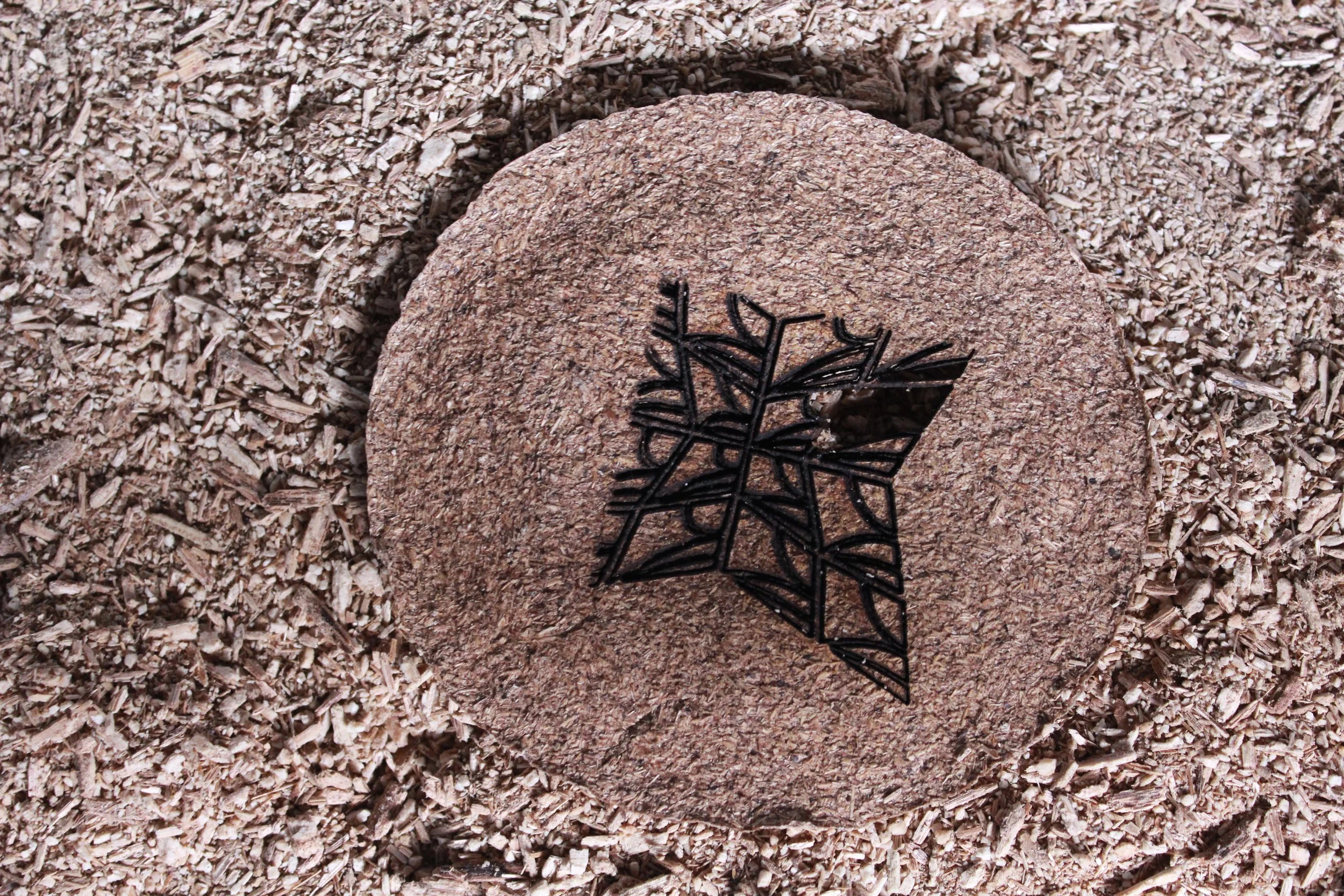
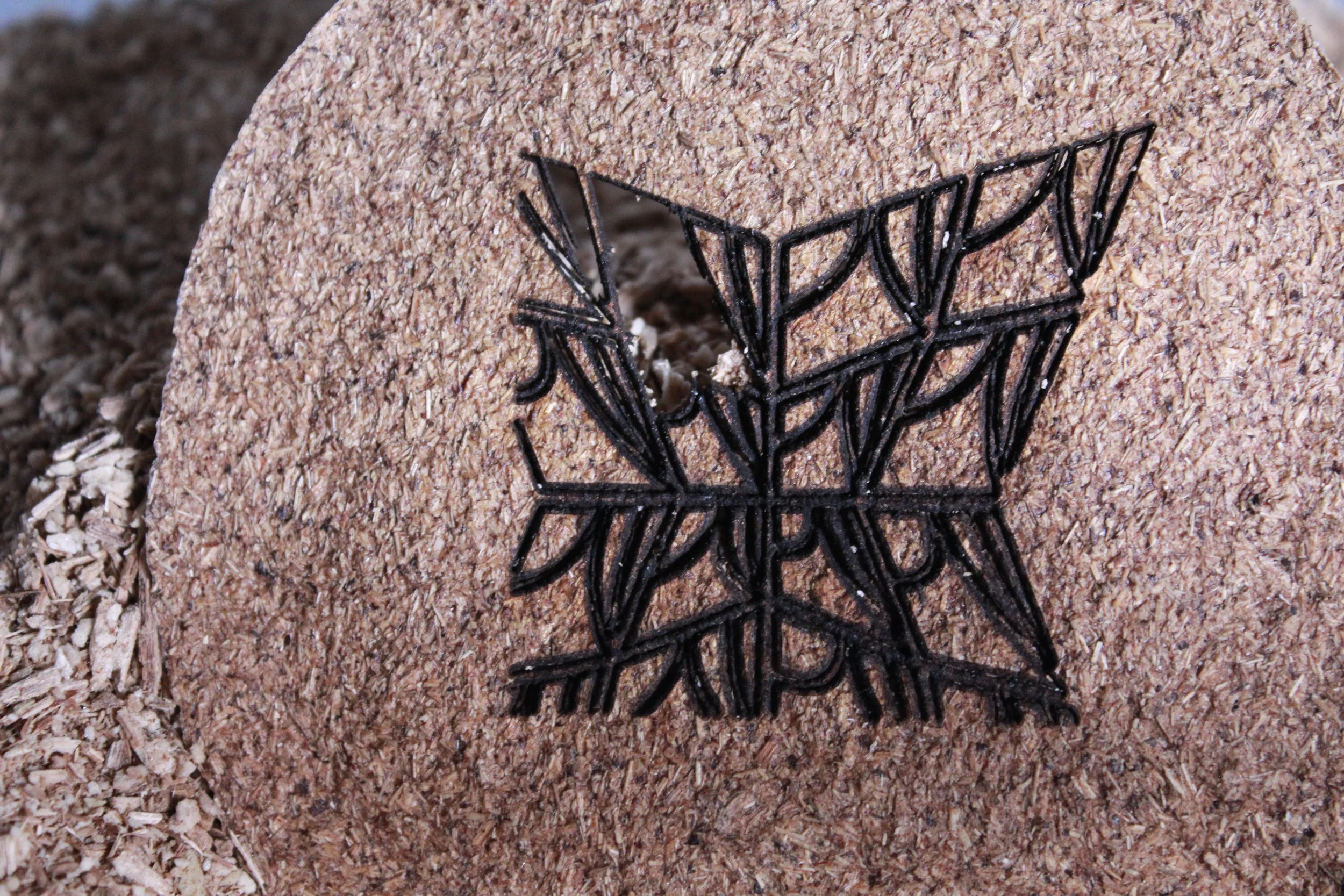
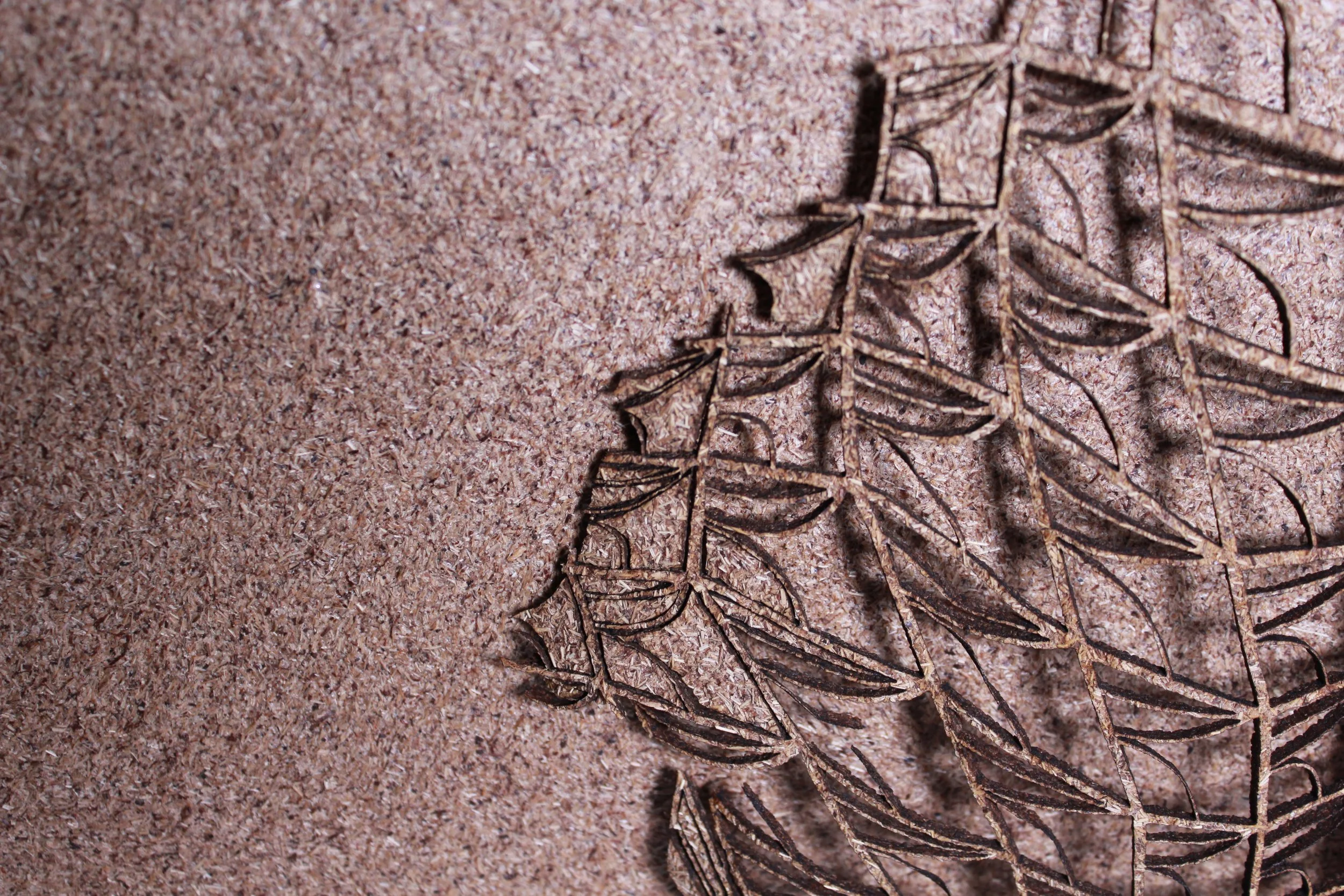

KNOTWEED BRICKS
We experimented with compressing knotweed fiber into bricks but found that the process required significant time and material. However, these compressed samples suggest potential for applications in biodegradable packaging or lightweight structural panels.
FORAGING AND PROCESSING
Foraging & Processing: We collected carloads of Japanese knotweed near Duck Hollow Trail, dried it, crushed it, and sifted it into various grades.

